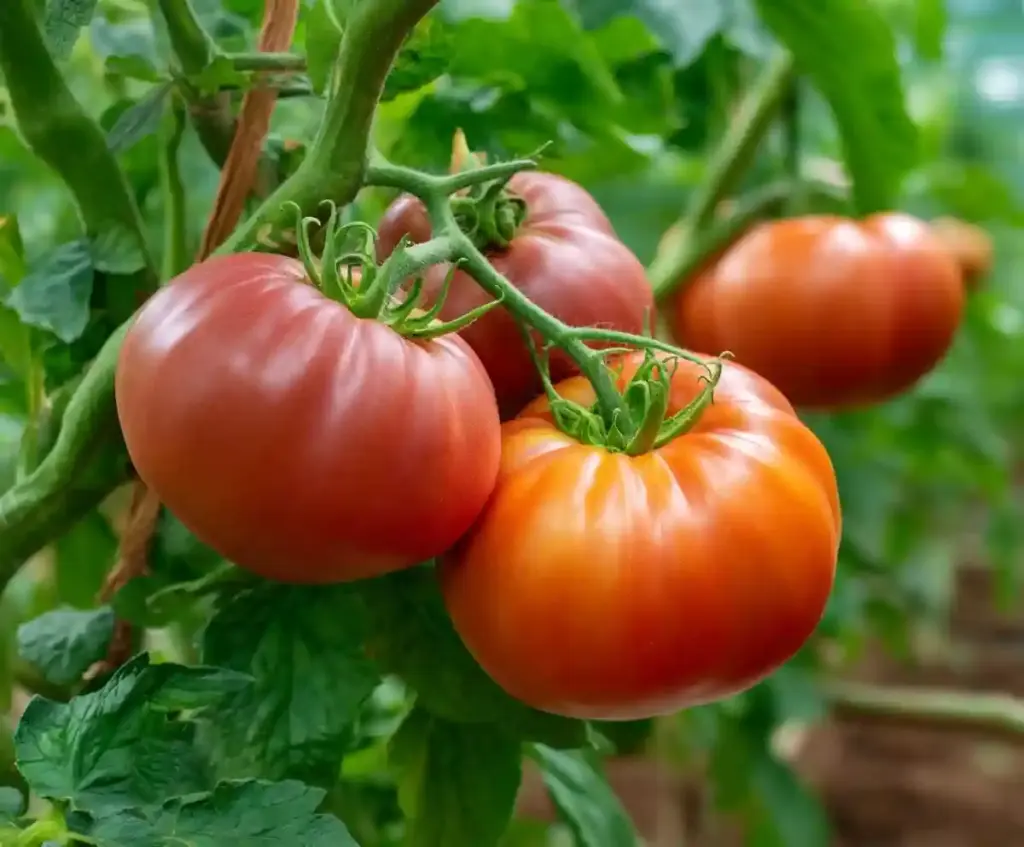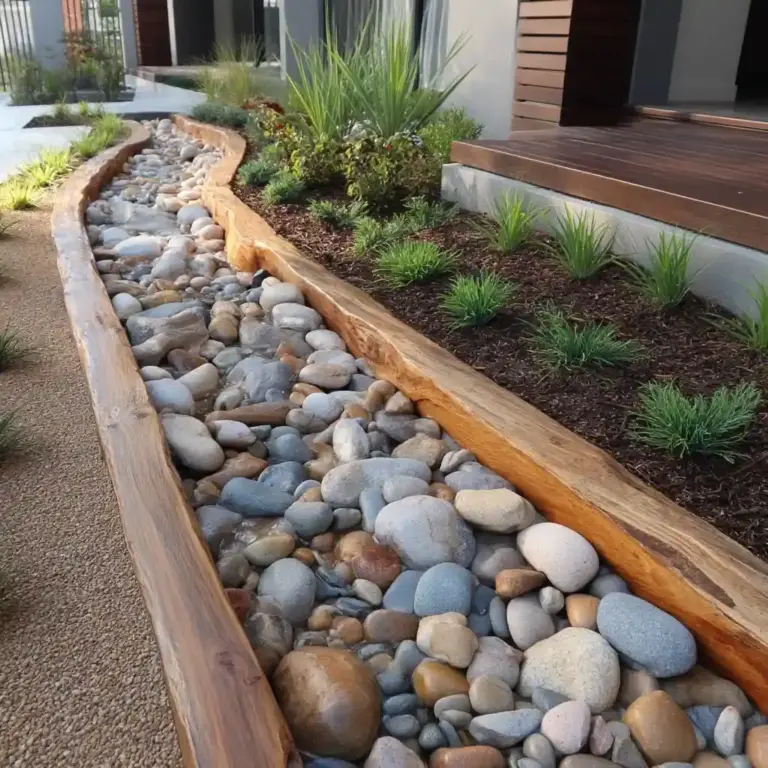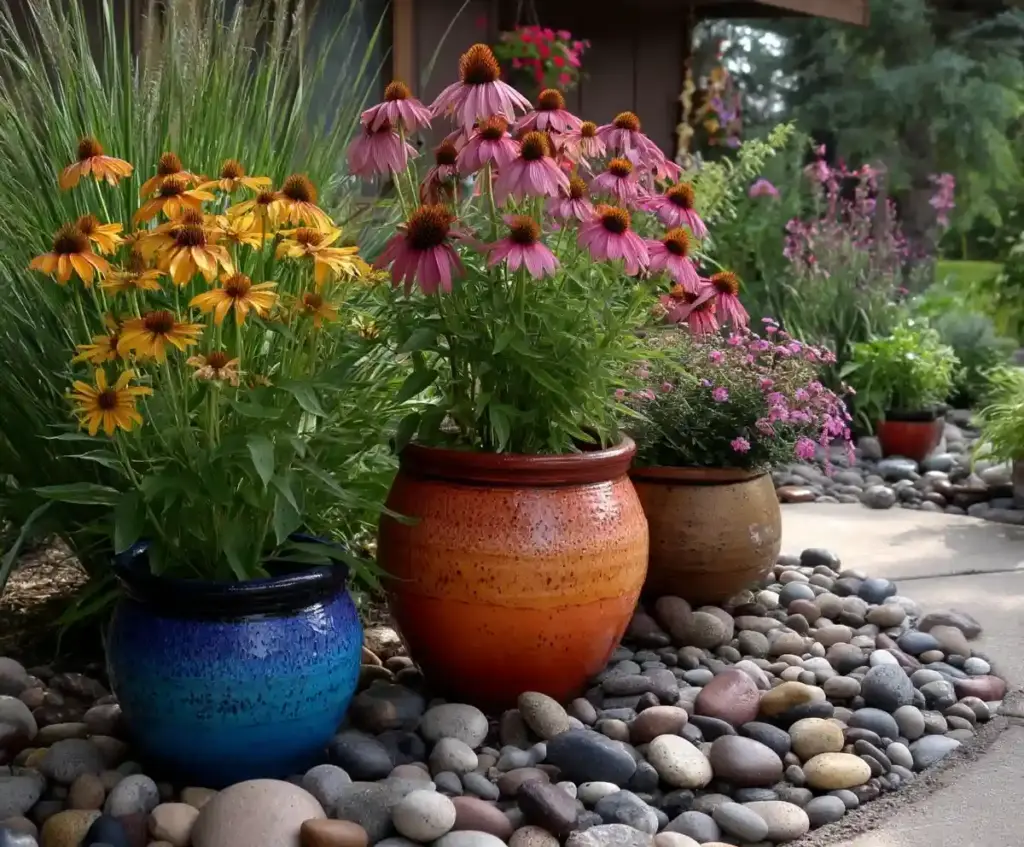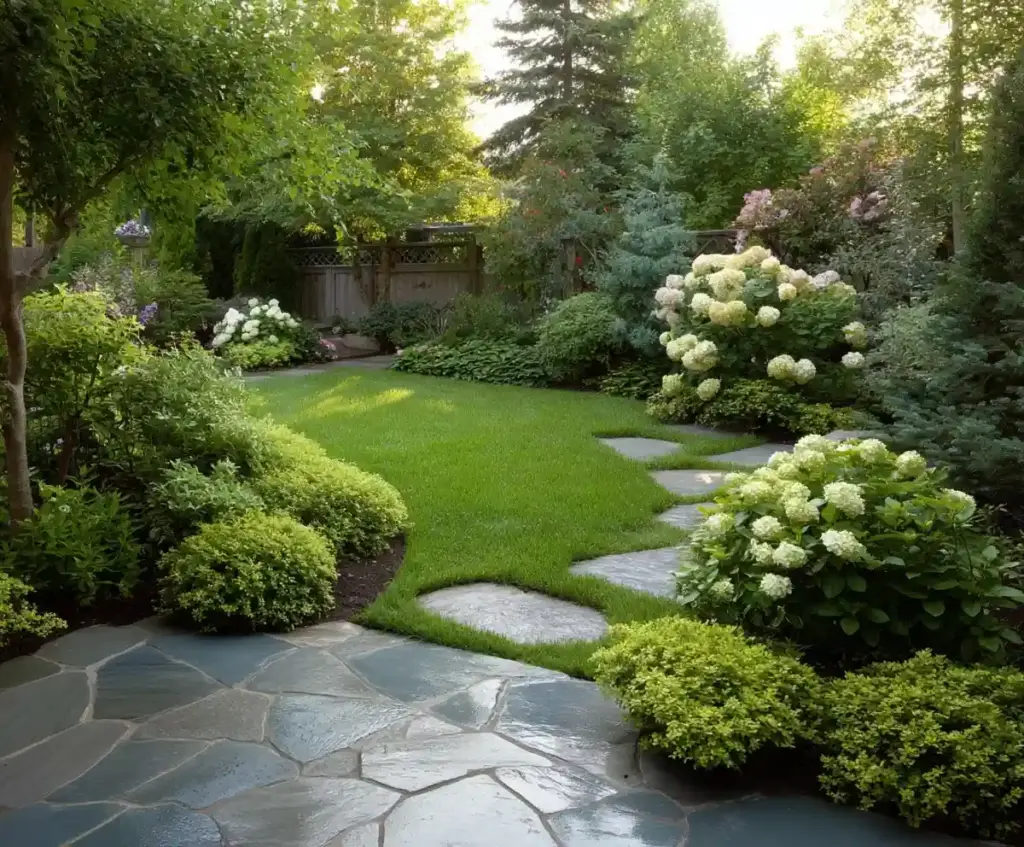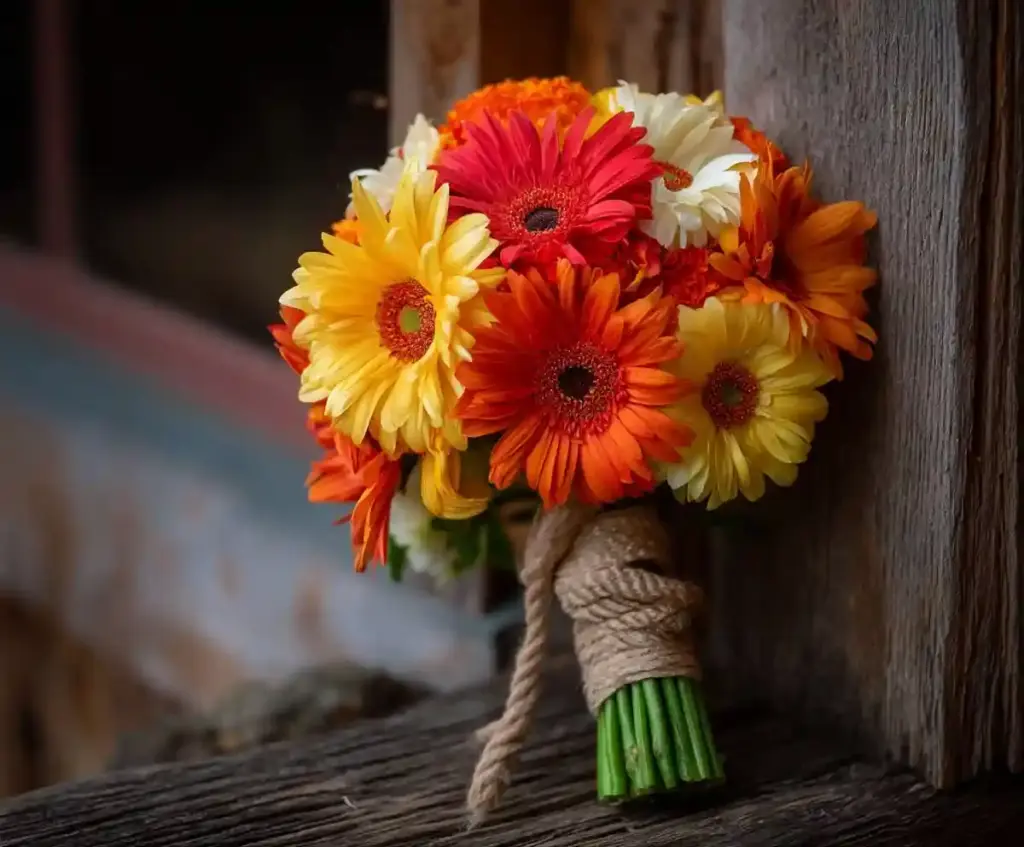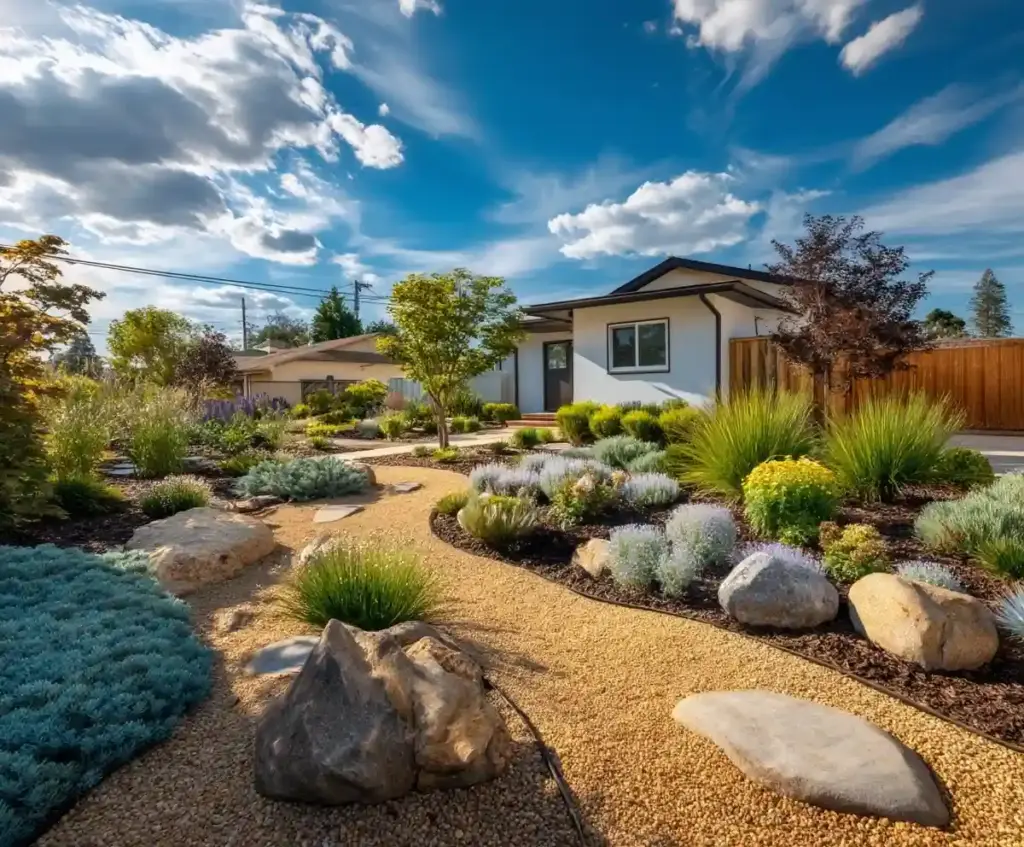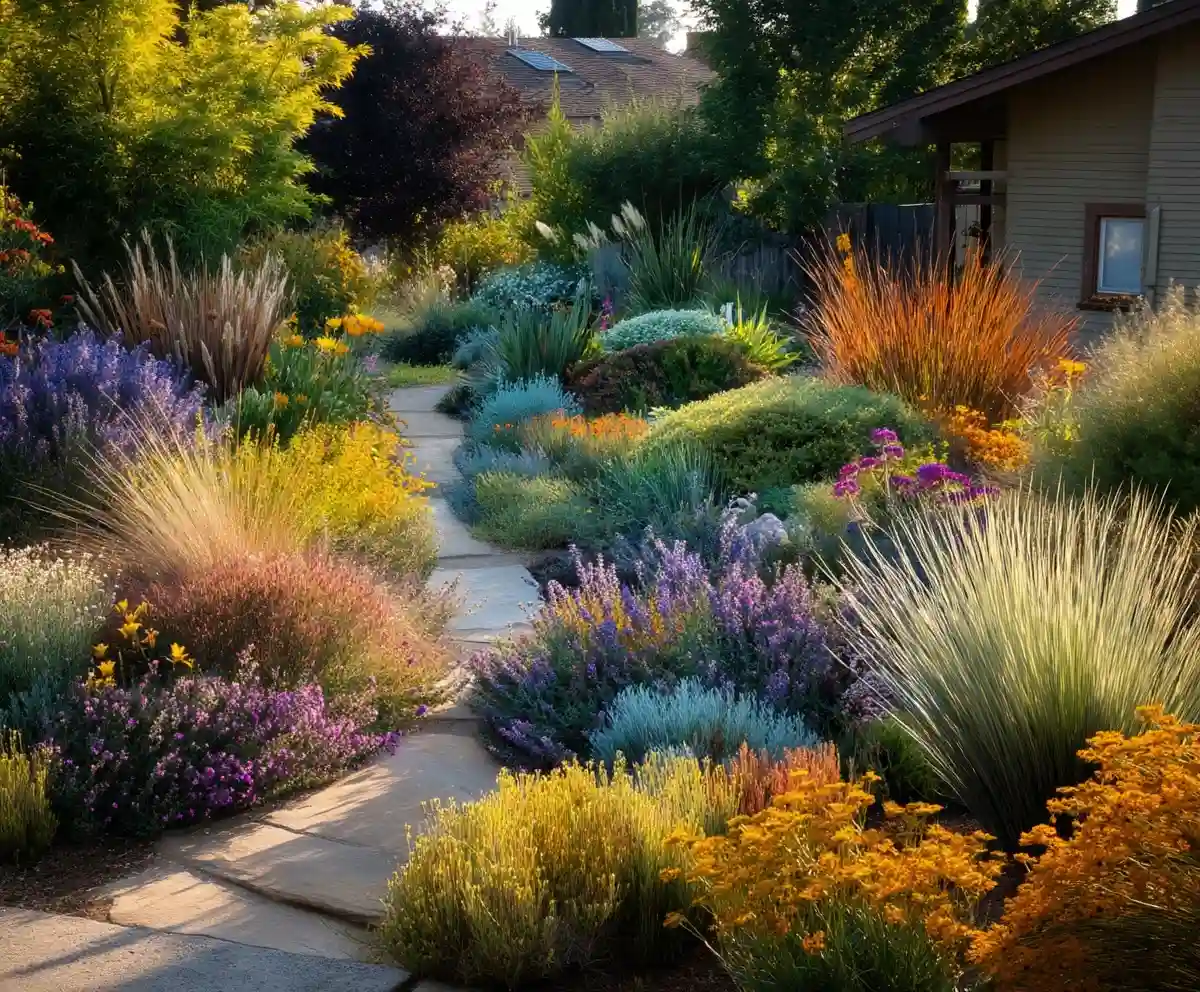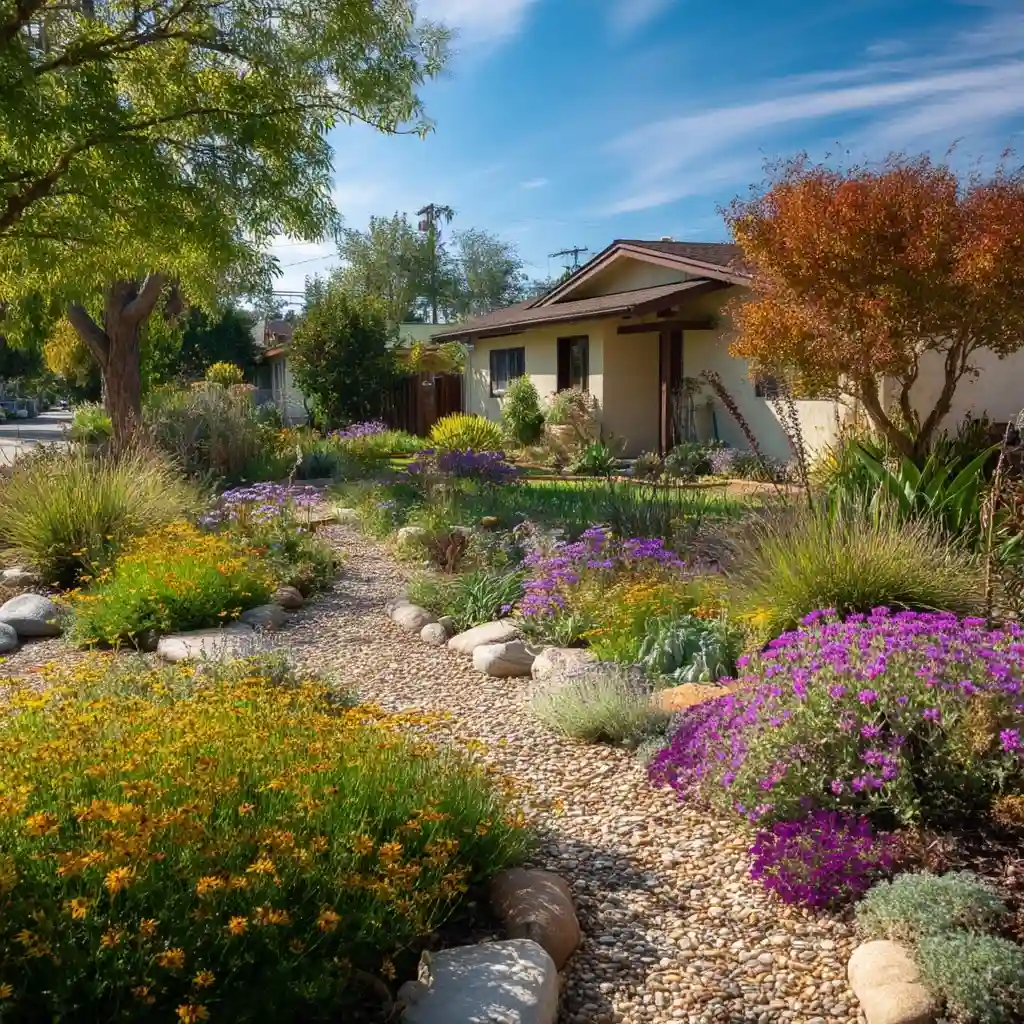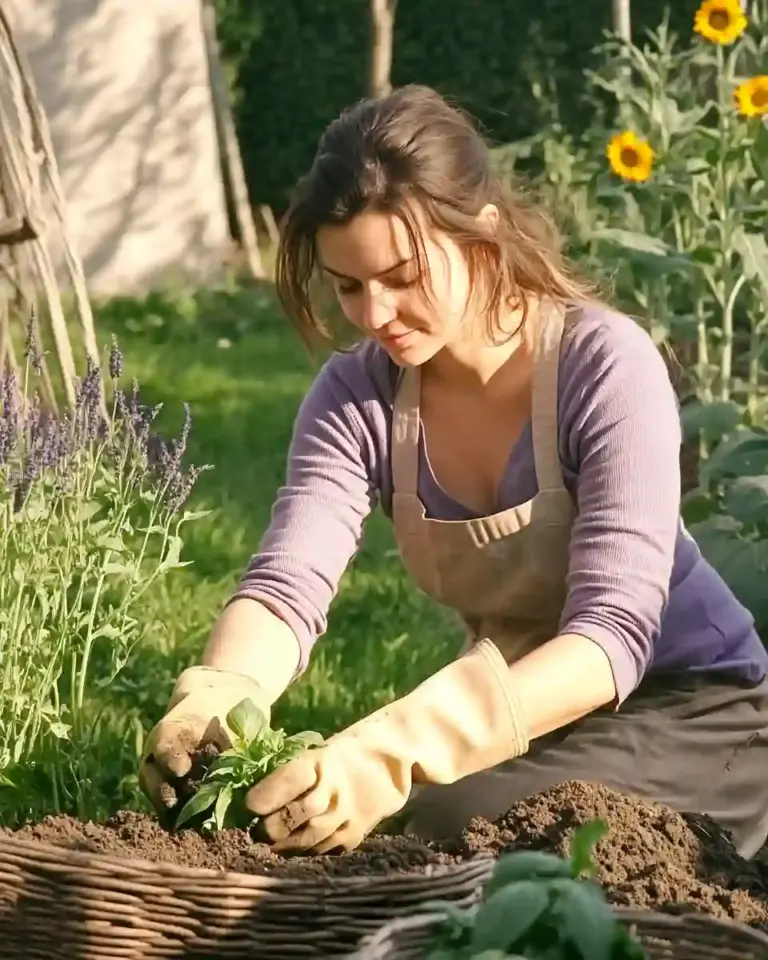A water-wise garden isn’t just about saving water—it’s about creating a thriving landscape that turns heads while using a fraction of the resources of a traditional lawn. In dry regions or places with water restrictions, replacing thirsty grass with a carefully designed mix of drought‑tolerant plants, gravel mulch, and smart irrigation can transform your yard into a colorful, low‑maintenance retreat. Not only does this approach conserve water, but it also reduces noise pollution from mowers, minimizes fertilizer and pesticide use, and attracts pollinators and wildlife, making your garden a living, sustainable habitat.
Table of Contents
Kill the Turf and Rethink the Water
Creating a water-wise garden starts with saying goodbye to traditional turf. Standard lawns require constant irrigation, especially in hot, dry summers, making them one of the biggest water drains in residential landscapes. Instead of battling brown patches, fungal diseases, and high water bills, replace grass with a foundation that sets your garden up for long-term success.
The first step is to remove or kill the lawn without disturbing the soil too much. Letting the grass dry out naturally over the summer, covering it with cardboard or newspaper, or using solarization with clear plastic can help eliminate roots while preserving valuable organic matter. Leaving the dead turf in place works as a natural weed barrier and slowly enriches the soil as it decomposes.
Once the lawn is gone, rethink your watering strategy. Installing a drip irrigation system or soaker hoses delivers water directly to plant roots instead of wasting it through evaporation or overspray. During the first year, your new plantings will need periodic watering to establish, but once mature, your water-wise garden will thrive with minimal irrigation—saving thousands of gallons annually.
What’s Going On Below the Surface
Beneath the beauty of a water-wise garden, the soil is quietly doing the heavy lifting. Healthy soil stores moisture like a sponge, reducing the need for constant watering. The key is to build a foundation that encourages deep root growth and retains water where plants need it most.
Start by assessing your soil type. Sandy soils drain quickly, while clay soils hold water but may suffocate roots. Mixing in compost or well-aged organic matter improves both, creating a balanced structure that promotes aeration and moisture retention.
Mulch is another secret weapon. A 2‑ to 3‑inch layer of shredded bark, wood chips, or gravel not only conserves water but also keeps the soil cool, suppresses weeds, and gradually enriches the earth as it breaks down. For a water-wise garden, consider pairing organic mulch in planting beds with gravel or stone paths that allow rainfall to soak in rather than run off.
Encouraging deep-rooted plants will further stabilize the soil and tap into subsurface moisture, creating a self-sustaining ecosystem that thrives even through summer heat waves.
Plant Choice Is Based on Year-Round Texture and Color
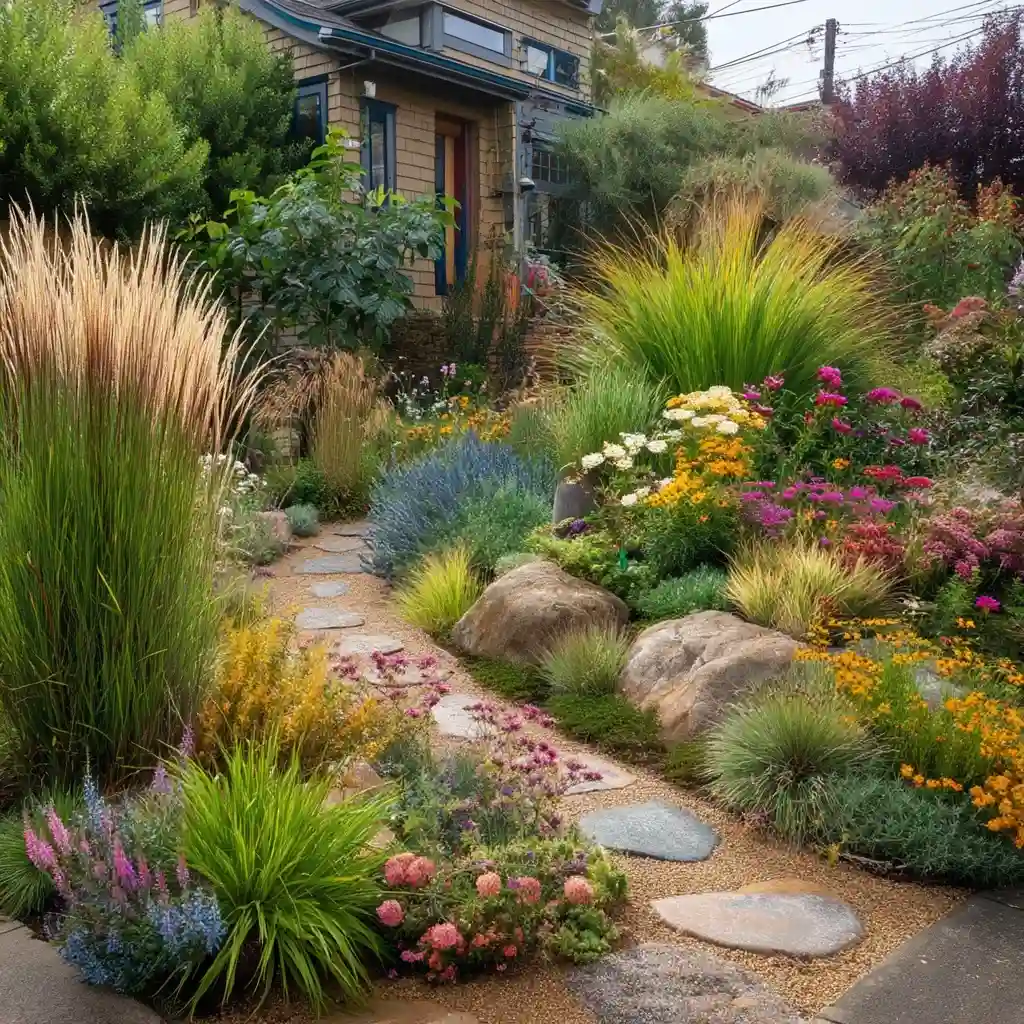
A successful water-wise garden doesn’t have to sacrifice beauty for sustainability. The key is choosing plants that look vibrant through every season while requiring minimal water. Instead of focusing only on blooms, think about foliage color, leaf shape, and texture to create visual interest all year long.
Drought-tolerant perennials like lavender, salvia, and echinacea bring splashes of color during the growing season, while ornamental grasses sway with movement and add structure through winter. Evergreen shrubs or groundcovers, such as creeping thyme or dwarf juniper, ensure your garden never looks bare even in cooler months.
Layering plants by height also enhances texture and depth. Combine low-growing succulents with medium-height flowering perennials and taller shrubs to create a natural flow. When grouped strategically, these plants form microclimates that help retain soil moisture and shield roots from the sun—another water-saving bonus.
Choosing native or climate-adapted species ensures your water-wise garden thrives without constant care. Once established, these resilient plants reduce maintenance, attract pollinators, and keep your garden visually appealing in every season.
Hard Lessons Learned
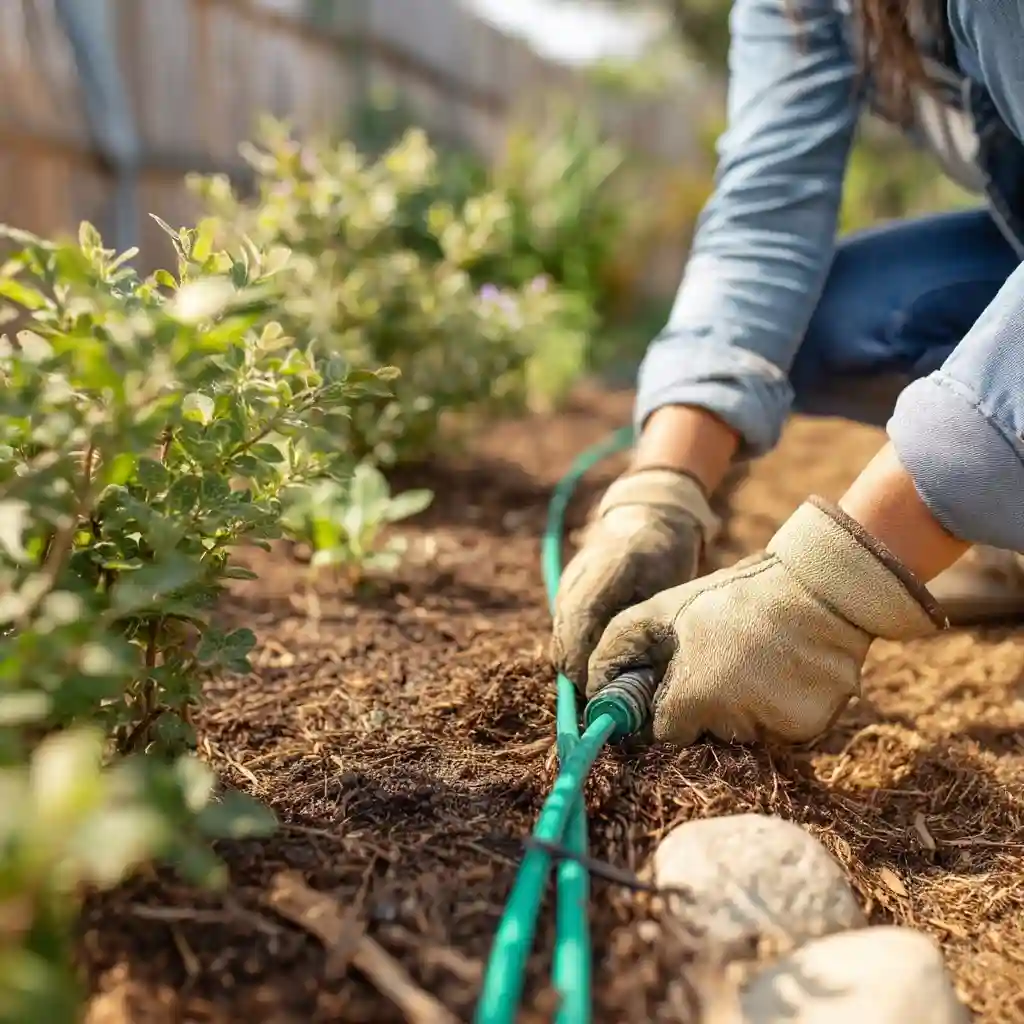
Every water-wise garden journey comes with a few surprises. Transitioning from a traditional lawn to a drought-friendly landscape often involves trial and error, and the lessons learned along the way can make your garden more resilient.
One common challenge is overwatering during the establishment phase. While new plants need consistent moisture to develop strong roots, too much water can cause rot or encourage shallow root growth, making plants less drought-tolerant in the long run. Another frequent mistake is planting too densely. Even water-efficient species can struggle if they compete for limited moisture and nutrients.
Wind exposure and sun intensity can also test your design. Without proper windbreaks or shade, some plants may wilt or show leaf burn. Adjusting plant placement, adding mulch, and selecting more heat‑tolerant varieties can solve many of these issues.
Learning from these experiences allows gardeners to refine irrigation schedules, improve soil health, and create a thriving, self-sustaining water-wise garden that gets stronger with each season.
Tree Selection Matters Most
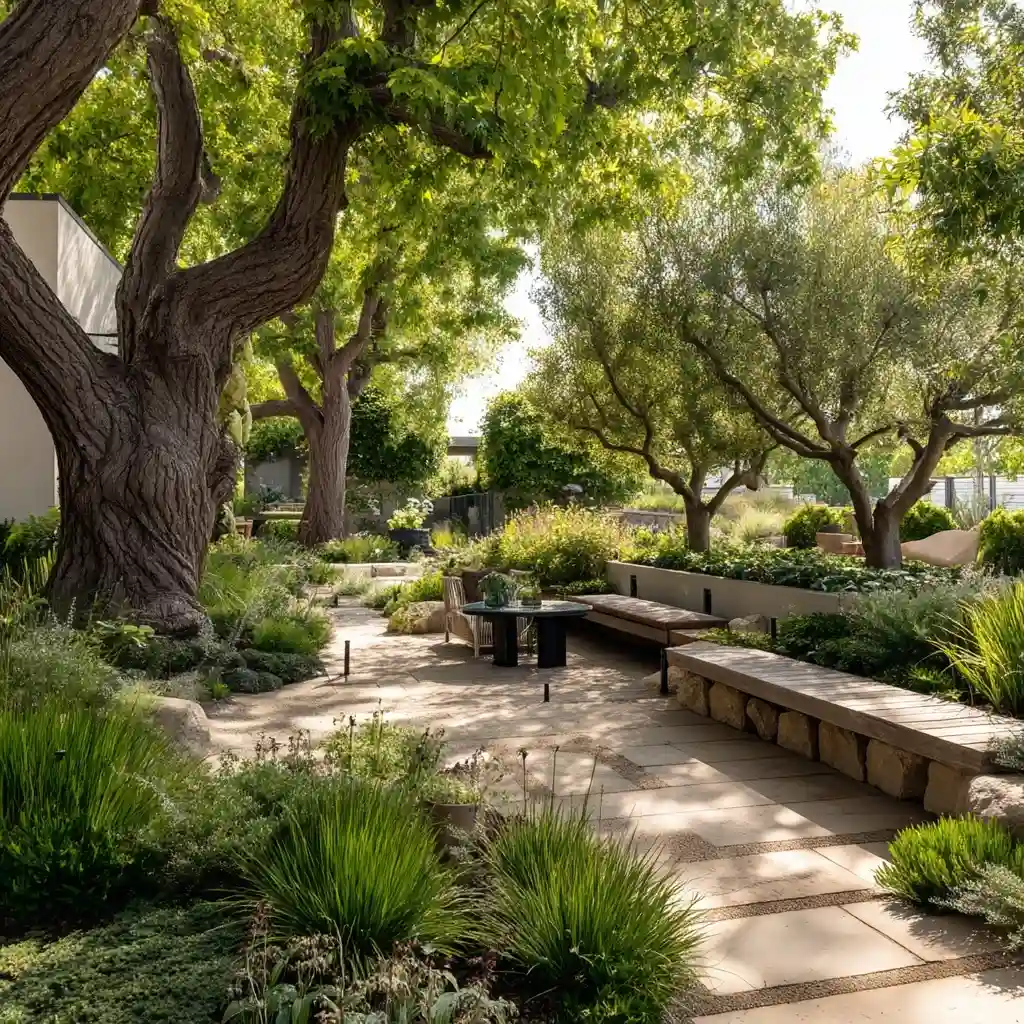
In a water-wise garden, trees are the backbone of the landscape. Their size and placement influence everything—from shade and temperature to soil moisture and plant survival. Choosing the right trees can make the difference between a thriving oasis and a garden that struggles through heat and drought.
Opt for species that are both drought-tolerant and climate-adapted. Trees like desert willow, honey locust, or certain oak varieties can handle long dry spells once established. Native trees are often the best choice, as they are already suited to local conditions and support native wildlife.
Placement is just as important as selection. Strategically planting trees on the south or west sides of your home provides afternoon shade, lowering soil evaporation and reducing water needs for nearby plants. Deep, infrequent watering helps trees develop extensive root systems that stabilize the soil and draw from natural groundwater reserves.
Investing in the right trees early on creates a protective canopy that shields understory plants, making your water-wise garden cooler, greener, and more self-sufficient for decades to come.
Pay Extra Attention to Winter
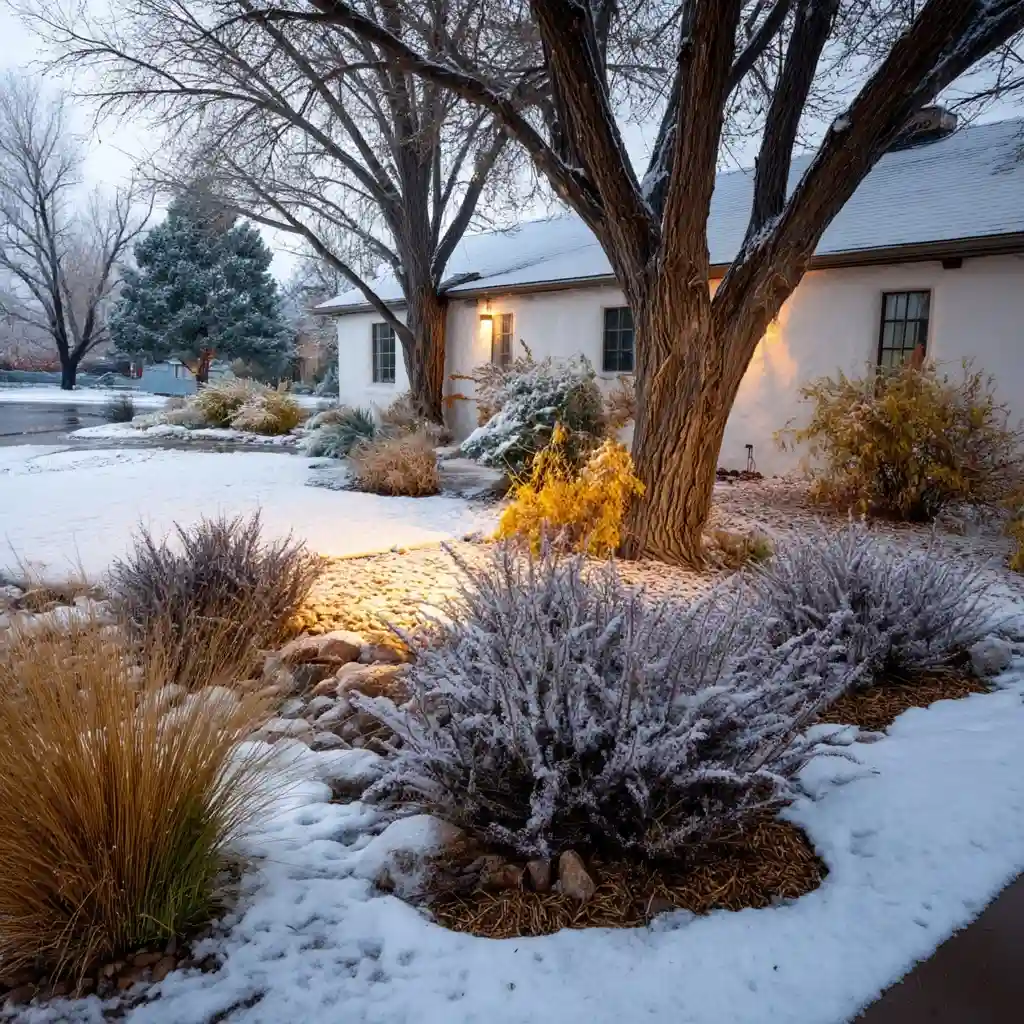
A water-wise garden doesn’t take a break when the weather turns cold. In fact, winter is a critical season for maintaining plant health and protecting the water-saving work you’ve done all year. While your irrigation needs decrease, your plants still rely on occasional deep watering if the season is unusually dry, especially for newly planted trees and shrubs.
Mulching becomes even more important in winter. A thick layer of organic mulch insulates the soil, regulates temperature swings, and prevents the freeze-thaw cycles that can damage roots. For regions prone to heavy winds or snow, providing temporary protection—such as burlap wraps or windbreaks—can help safeguard sensitive plants.
Winter is also the best time to evaluate the structure of your water-wise garden. With many plants dormant, you can easily spot gaps in your design, prune trees for healthier growth, and plan adjustments for the next growing season. By paying attention during this quieter period, you ensure your garden remains resilient, conserving water and thriving year-round.
Conclusion
Creating a water-wise garden is about more than saving water—it’s about building a thriving, resilient landscape that works with nature rather than against it. By removing thirsty turf, improving soil health, selecting year-round plants, and paying attention to seasonal care, you can enjoy a stunning garden that flourishes with minimal irrigation. Over time, your efforts will reward you with lower maintenance, reduced water bills, and a vibrant space that supports pollinators and local wildlife.
🌿 Love gardening inspiration? Follow me on Pinterest for bold plant ideas, tips, and seasonal color!
More Posts
